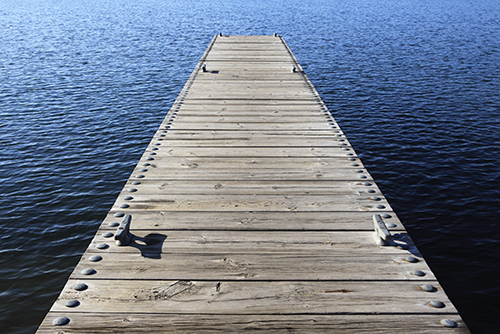
Every boat needs a place to call home. Out on the lake, you will see many different kinds of boat docks. Each one comes with its own distinct advantages and drawbacks. If you plan on building a dock on your lake property or buying lake property with a dock, take a look at these choices available.
Piling Dock
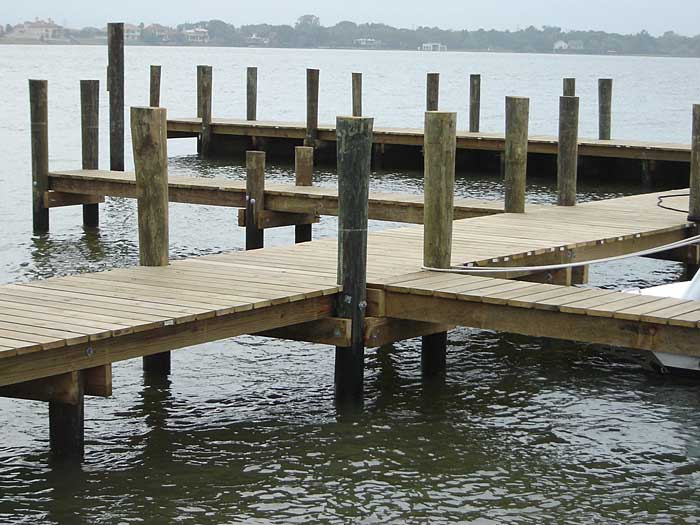
When most people imagine a dock on the lake, they envision a piling dock.
Piling docks are built by driving heavy wooden beams known as “pilings” (think telephone poles, but shorter) deep into the bed of the lake.
The frame is then attached to the pilings, forming a sturdy, wooden walkway.
Piling docks typically cost $20-$40 per square foot, depending on the installation. Factors such as lake depth, climate and local regulations can increase or decrease the cost of installation.
Piling docks have the advantage of stability and strength.
Homeowners can build them in high-flow areas such as rivers and streams, since piling docks are less likely to be washed away by floodwaters.
The main downside for piling docks is cost, both of installation and maintenance. Piling docks also cannot rise or fall with the level of the lake.
Piling docks work well if you have a larger boat. They can also serve as fishing piers or just a place to plant your lawn chair and catch some rays.
Floating Dock
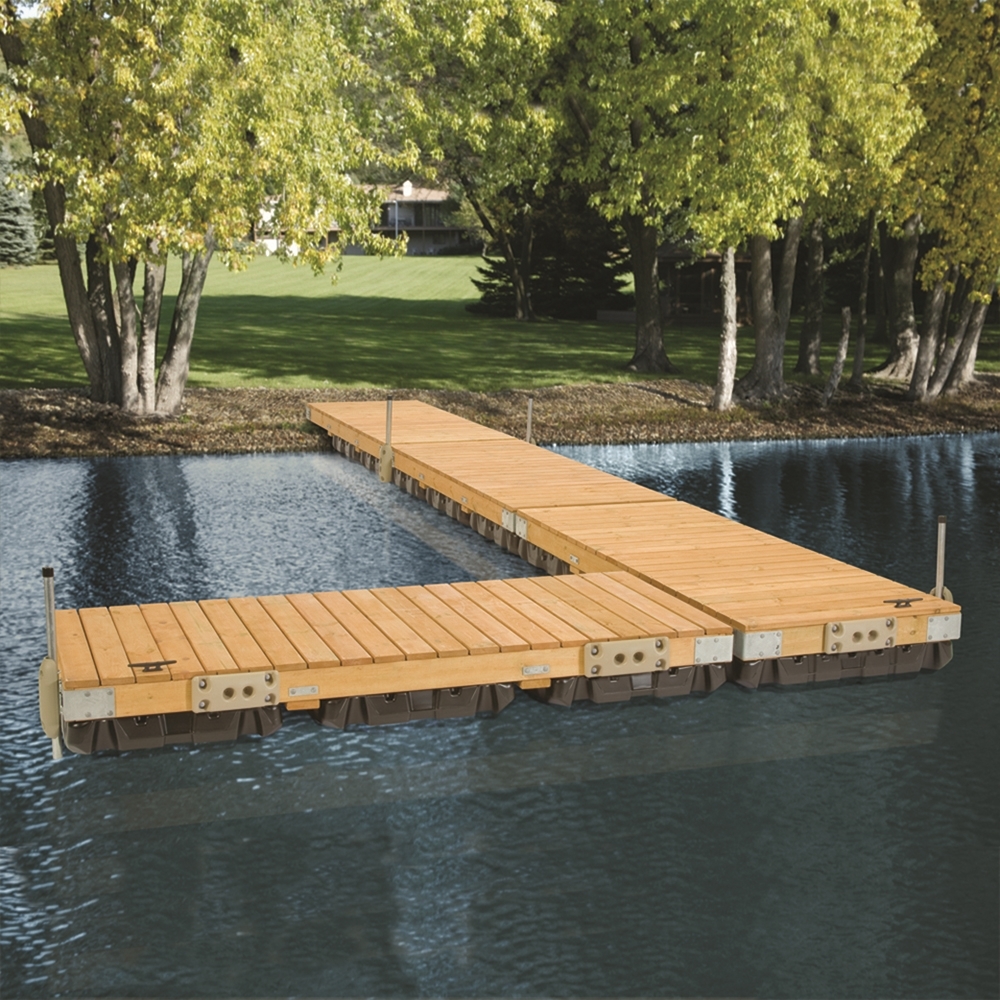
Floating docks cost less than piling docks, and are much more versatile.
These consist of an anchored, floating platform of large, airtight drums, onto which a wooden platform is built.
The structure floats on the water’s surface but is large and stable enough to serve as a boat dock.
Floating docks have the advantages of versatility and lower cost.
Most floating boat docks cost between $20 and $35 per square foot and typically require less square footage than a piling dock.
Floating boat docks automatically rise and fall according to the lake level. You can also tow them out of the lake in the winter, or for repairs.
On the downside, floating docks are less stable.
They shift with the current and are more likely to be washed away by floodwaters.
Floating boat docks work well for smaller boats, such as fishing boats, or for those with a limited budget.
Crib Docks
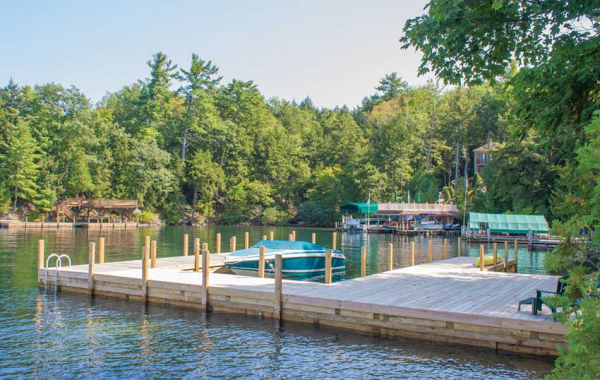
On the opposite end of the stability spectrum are crib docks. These are heavy, sturdy structures that can last for decades.
Crib docks are built by filling a large container or framework with rocks or stones. Decking is then built on top that connects it to the shoreline.
Crib docks are extremely sturdy, permanent structures. Those who build crib docks are essentially extending their shoreline out into the water, within the confines of the dock!
The downsides to crib docks are cost and regulation.
Crib docks can be very expensive. Furthermore, many areas limit the construction of crib docks due to their environmental impact.
They disrupt the flow of water along the shoreline, disrupt local wildlife and may cause problems in the event of a flood.
Suspension Docks
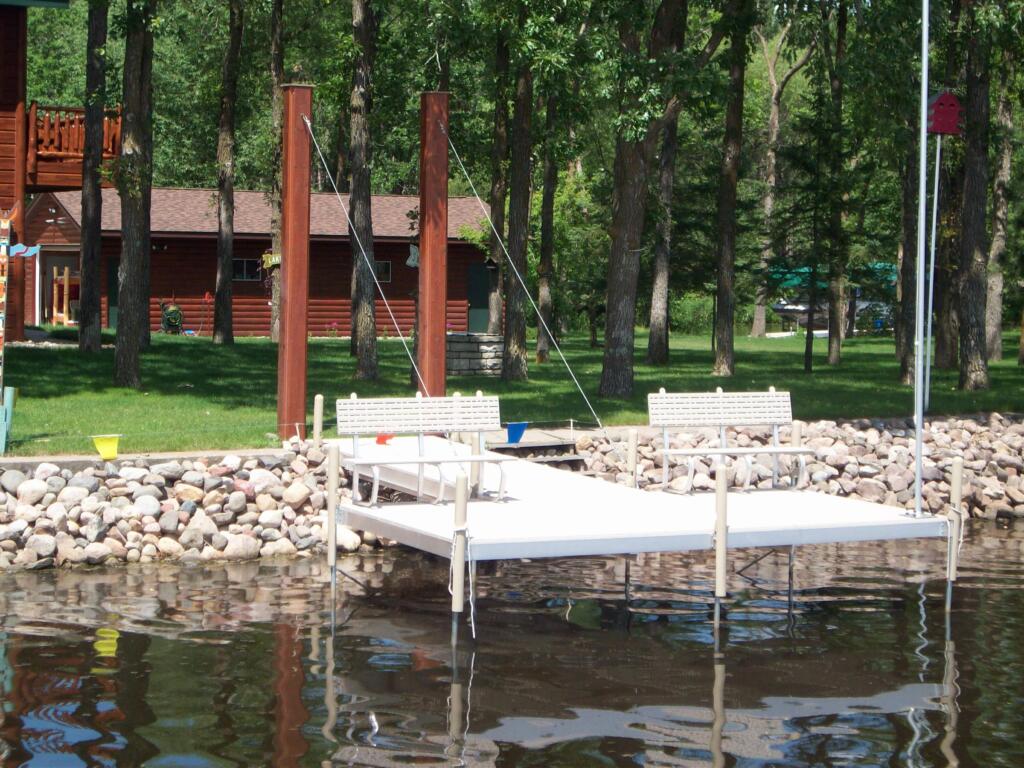
A modern addition to the array of dock choices is the suspension dock.
These docks are almost the diametric opposite of a crib dock. Suspension docks consist of a metal framework built to overhang the water, much like a suspension bridge.
Suspension docks work best in areas with fragile ecosystems. They inflict a minimal impact on the local flora and fauna.
Many homeowners enjoy the attractive, elegant design. Many of these docks can raise or lower according to the level of the lake, as well.
The biggest drawback to a suspension boat dock is the cost. They are one of the most expensive types of boat docks. Suspension docks often take much longer to design and construct.
Suspension docks are a good option for homeowners who can afford a more expensive dock and want to avoid disrupting the local wildlife.
Pipe Dock
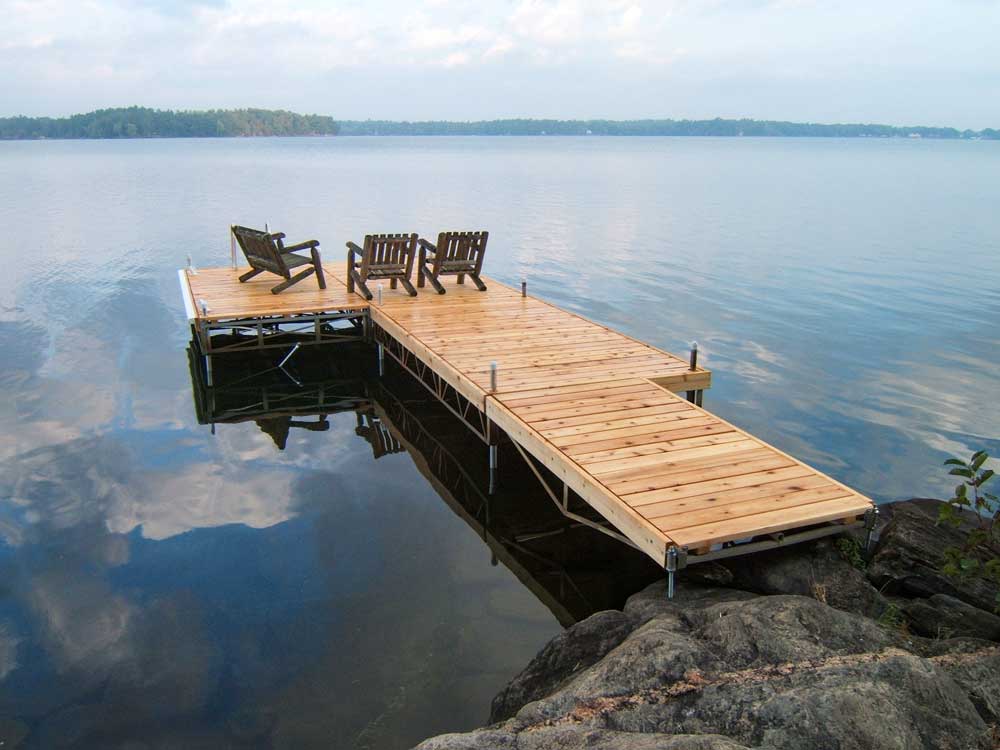
Very similar to the piling dock is the pipe dock, also known as a “pipe leg dock.”
These are very similar to wooden piling docks, but use a framework of heavy aluminum pipes instead of wooden pilings. The pipes form a metal scaffolding, with wooden planks on top.
Pipe docks are becoming increasingly popular in shallow water areas, where the depth doesn’t exceed eight feet.
They are less sturdy than traditional wooden piling docks, but this is not an issue in shallow areas.
Pipe docks do not work well on lakes that freeze over, due to the long-term effects of freezing and thawing on the pipes. Their main advantage is a much lower cost than traditional docks.
Boat Lift

Many boat owners are choosing boat lifts over traditional docks. A boat lift is a removable structure that actually lifts your boat out of the water when it is not in use. Using a boat lift can help prevent wear and tear on your boat, and help preserve its hull.
Boat lifts can typically lift a boat out of the water for transportation, for repairs or to another body of water.
Depending on the size, boat lifts typically cost between $5,000 and $10,000.
Double-Decker Boat Dock
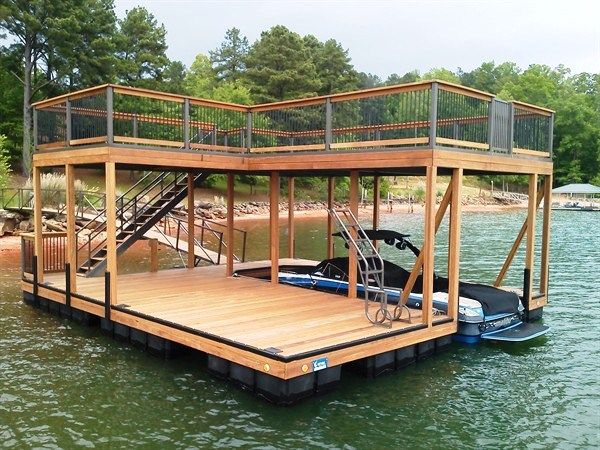
Many boat owners opt for a double-decker boat dock, especially for large boats or on deep water. Read our “Why you Need a Double Decker Dock” article for an in-depth look at this unique dock option.
Read enough about docks and curious about what boat would be the best for you and your lifestyle? Take a look at our article, “Buying the Best Boat for You“ or read more about lake living here.

